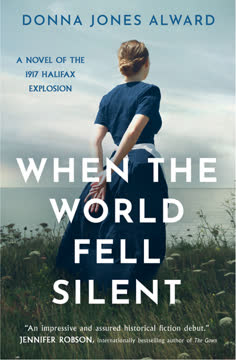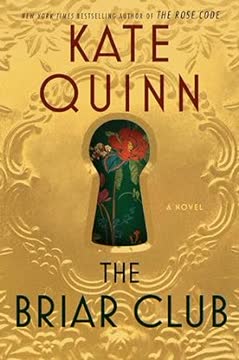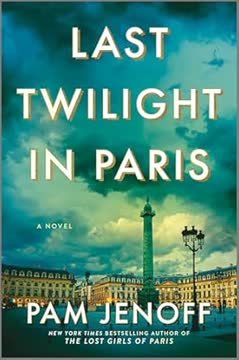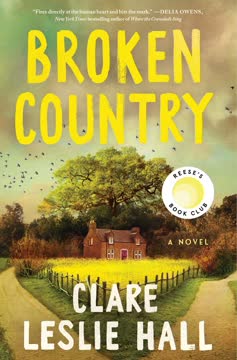Plot Summary
Halifax: City on Edge
Halifax, 1917: The city pulses with the tension of war, its harbor crowded with ships and soldiers, its streets alive with the hopes and fears of those left behind. Nora Crowell, a young nurse, finds purpose in her work at Camp Hill Hospital, tending to wounded soldiers returned from the front. The city is a crossroads—of convoys, of cultures, of destinies. For Nora, Halifax is both a place of opportunity and a crucible of loss, as she navigates the expectations of family, the camaraderie of her fellow "Bluebird" nurses, and the ever-present shadow of war. The city's energy is electric, but beneath it runs a current of dread, as everyone waits for the next telegram, the next ship, the next heartbreak.
Bluebirds and Broken Men
Nora's days are filled with the pain and resilience of men broken by war. She tends wounds both visible and invisible, learning that the greatest injuries are often those of the spirit. The camaraderie among the nurses is a lifeline, but the work is relentless, and the emotional toll mounts. Nora's compassion is both her strength and her vulnerability, as she struggles to help men who sometimes cannot be helped. The hospital is a microcosm of the war's devastation, and Nora's sense of duty is tested daily. Through it all, she clings to the hope that her work matters, even as she questions whether she can save anyone—including herself.
Love and Wartime Choices
In the midst of chaos, Nora finds solace in the arms of Alton "Alley" Vienot, a charming soldier waiting to be shipped overseas. Their courtship is a brief, bright respite from the darkness, filled with laughter, dancing, and stolen kisses. But the war intrudes, and Alley's deployment looms. One impulsive night changes everything, leaving Nora with a secret that will shape her future. The choices made in wartime are never simple, and Nora is forced to confront the consequences of desire, duty, and the expectations placed upon her as a woman. Love, in this world, is both a comfort and a risk.
The Day the World Shattered
December 6, 1917: A collision in Halifax harbor ignites the Mont Blanc, a munitions ship, unleashing the largest man-made explosion before Hiroshima. The city is leveled in seconds—homes, families, and futures obliterated. Nora is thrown into the heart of the disaster, her hospital inundated with the wounded and dying. The scale of suffering is unimaginable; the city's spirit is tested as never before. In the chaos, Nora's own family is lost, and her secret—her pregnancy—becomes a heavier burden. Across town, Charlotte Campbell, a war widow, is also caught in the blast, her world upended as she searches for her missing child. The Halifax Explosion as Catalyst is a crucible, forging new identities from the ashes.
Aftermath: Wounds and Secrets
In the days following the explosion, Halifax is a city of ghosts. Nora throws herself into her work, stitching wounds, comforting the bereaved, and searching desperately for her family. Her pregnancy becomes harder to hide, and the silence from Alley is deafening. Charlotte, meanwhile, awakens in a hospital, her daughter missing, her future uncertain. Both women are forced to navigate a world transformed by tragedy, clinging to hope even as it slips through their fingers. The city rallies—neighbors help neighbors, strangers become family—but the scars, both physical and emotional, run deep. Secrets fester, and the choices made in the aftermath will echo for years.
Two Women, Two Losses
Nora and Charlotte, though strangers, are bound by loss. Nora mourns her family and the life she thought she would have; Charlotte, denied the comfort of her in-laws, is left to fend for herself in a city that feels both familiar and alien. Each woman faces impossible decisions: Nora must choose between her career and her unborn child, while Charlotte's search for her daughter becomes an obsession. Their stories run in tandem, each shaped by the same disaster, each a testament to the endurance of the human spirit. Through grief, they find unexpected strength, and the will to keep moving forward.
Letters, Lies, and Longing
As winter deepens, Nora's letters to Alley go unanswered, her hope for rescue fading. She is forced to confide in her sister's neighbor, Mrs. Thompson, and eventually in Neil McLeod, a compassionate doctor who becomes her unlikely ally. The silence from Alley is a wound that will not heal, and Nora must reckon with the reality that she is alone. Charlotte, meanwhile, follows every lead in her search for her daughter, clinging to the belief that the child is alive. Both women are sustained by longing—for love, for family, for a sense of belonging—but the lies they tell themselves and others threaten to unravel the fragile lives they are building.
The Search for Home
Spring brings change. Nora, now responsible for her orphaned niece Evelyn and her own impending child, must leave nursing behind. Neil proposes a marriage of convenience, offering stability and respectability. Reluctantly, Nora accepts, and together they create a new family, one forged from loss but sustained by kindness and mutual respect. Charlotte, having found a child she believes is her missing daughter, builds a life around this fragile hope, taking work as a housekeeper in Chester. Both women are haunted by the past, but determined to create a future for themselves and the children in their care.
A Child Not Her Own
Charlotte's conviction that the child she has found is her own begins to waver. Subtle differences, a birthmark, and the child's unfamiliar habits gnaw at her certainty. The truth is unbearable: in her grief, she has taken another woman's daughter. The realization is devastating, but Charlotte cannot bring herself to let go. Meanwhile, Nora's family grows—her son James is born, and she embraces her role as mother to both him and Evelyn. The two women's lives, once parallel, are now on a collision course, as the consequences of Charlotte's desperate act come to light.
Duty, Guilt, and Sacrifice
Nora and Neil's marriage, though founded on necessity, deepens into genuine partnership. Yet both are haunted by what they have lost and what they have sacrificed. Neil's sense of duty draws him to Boston to fight the Spanish Flu, leaving Nora to manage alone. Charlotte, wracked by guilt, contemplates running away with the child, but is ultimately unable to deny the truth. The cost of survival is high—friendships are tested, secrets exposed, and the boundaries of right and wrong are blurred. In the crucible of crisis, both women must decide what kind of mothers, and what kind of people, they will be.
New Families, New Fears
The war ends, but peace brings its own challenges. Nora is reunited with Neil, their love finally acknowledged and embraced. Clara is returned to her rightful family, and Charlotte, bereft but resolute, seeks redemption by caring for her blind sister-in-law. The Spanish Flu casts a long shadow, threatening the fragile happiness that has been so hard-won. The community rallies once more, drawing strength from shared suffering and the bonds of family—chosen and found. The future is uncertain, but hope, at last, is possible.
Reunion and Reckoning
The confrontation between Nora and Charlotte is fraught with pain and compassion. Both women are forced to confront the consequences of their actions, and to seek forgiveness—from each other, from themselves, and from the children whose lives they have shaped. The reunion of sisters, the healing of old wounds, and the forging of new bonds are hard-won, but necessary. In the end, it is not perfection, but the willingness to try again, to love again, that redeems them.
The Cost of Survival
Survival comes at a cost. Nora and Charlotte, and the city of Halifax itself, are forever changed by what they have endured. The scars—physical, emotional, and moral—are lasting, but so too is the capacity for resilience. The story does not offer easy answers or tidy resolutions; instead, it honors the complexity of survival, the necessity of forgiveness, and the enduring power of hope. In the quiet after the storm, the world is not the same, but it is still worth living in.
The War Within
Even as the guns fall silent, the internal wars rage on. Nora and Neil must learn to trust each other, to let go of old hurts and embrace the possibility of happiness. Charlotte, stripped of everything, finds purpose in caring for Alice, her blind sister-in-law, forging a new kind of family from the ashes of the old. The war within is as fierce as any fought on the battlefield, but it is also where the greatest victories are won.
The World Falls Silent
The armistice brings a hush to the world, a moment of collective breath held in awe and relief. For Nora, it is a time to gather her family close, to mourn what has been lost, and to look forward with cautious optimism. For Charlotte, it is a time to stop running, to accept what cannot be changed, and to find solace in small acts of kindness. The silence is not empty, but full of memory, meaning, and the promise of renewal.
Forgiveness and Moving Forward
Forgiveness is not a single act, but a process—a daily choice to let go of anger, regret, and self-recrimination. Nora and Neil, now truly partners, build a life together, raising their blended family with love and gratitude. Charlotte, having made peace with her past, finds purpose in helping others, her own wounds slowly healing. The future is uncertain, but the lessons of the past—compassion, resilience, and the importance of community—light the way forward.
Homecoming and Hope
Neil's return is a homecoming in every sense—a reunion not just of bodies, but of hearts. The family gathers, the community celebrates, and the world, though battered, is still capable of joy. The story ends not with triumph, but with hope—a quiet, steadfast belief in the possibility of happiness, even after the world has fallen silent.
The Quiet After the Storm
In the aftermath, life resumes its steady rhythm. The scars of war and disaster remain, but so too does the strength that carried Nora, Charlotte, and countless others through the darkest days. The quiet is not emptiness, but a space for healing, for remembering, and for building anew. The women at the heart of the story—nurses, mothers, sisters, friends—are the true heroes, their courage and compassion a testament to the resilience of the human spirit.
Characters
Nora Crowell
Nora is the emotional and moral center of the novel—a young woman whose sense of duty and compassion drives her to serve as a nurse during the war. Her journey is one of transformation: from independent, career-focused "Bluebird" to reluctant mother, widow, and eventually, wife and partner. Nora's relationships—with her family, her fellow nurses, her first love Alley, and ultimately with Neil—are shaped by her deep empathy and her struggle to reconcile personal desire with societal expectations. The trauma of the Halifax Explosion and the loss of her family force Nora to confront her own vulnerability and strength. Her psychological arc is one of acceptance: of her limitations, her mistakes, and her capacity for love. Through grief, guilt, and forgiveness, Nora emerges as a woman who chooses hope, even when the world falls silent.
Charlotte Campbell
Charlotte is a study in resilience and moral ambiguity. Orphaned young, widowed by the war, and alienated from her in-laws, she is driven by a fierce love for her daughter—and later, by the desperate hope of finding her again after the explosion. Her psychological journey is fraught: in her grief, she mistakenly claims another woman's child as her own, a choice that brings both solace and unbearable guilt. Charlotte's actions are never simply "good" or "bad"; they are the product of trauma, loneliness, and the human need for connection. Her eventual recognition of the truth, and her willingness to do the right thing at great personal cost, mark her as a deeply flawed but ultimately courageous character. Her story is one of loss, but also of the possibility of redemption and new beginnings.
Neil McLeod
Neil is the embodiment of quiet strength and self-sacrifice. A doctor who volunteers in the wake of the explosion and later during the Spanish Flu, he is both a healer and a stabilizing force in Nora's life. His proposal of a marriage of convenience is motivated by compassion and respect, but his feelings for Nora deepen into genuine love. Neil's psychological complexity lies in his struggle to balance duty with desire, and his willingness to accept less than he wants for the sake of others. His patience, humility, and unwavering support make him the emotional bedrock of the family. Neil's journey is one of learning to ask for what he needs, and to trust that he, too, is worthy of love.
Alton "Alley" Vienot
Alley is the spark that ignites Nora's journey into adulthood—a handsome, fun-loving soldier whose romance with Nora is both a comfort and a complication. His departure for the front, and his subsequent silence, leave Nora adrift and force her to confront the realities of love, loss, and responsibility. Alley's eventual return is a moment of reckoning, revealing his inability to face the consequences of his actions. He is not a villain, but a product of his time and circumstances—a reminder of the fragility of dreams and the cost of war.
Evelyn Boutilier
Evelyn, Nora's niece, is both a burden and a blessing—a living link to the family lost in the explosion. Her innocence and resilience are a source of strength for Nora, and her longing for a mother is a poignant reminder of what has been lost. Evelyn's gradual acceptance of Nora as her new mother, and her bond with her sister Clara, are central to the novel's themes of chosen family and the healing power of love.
Clara Boutilier
Clara's disappearance and eventual return are the emotional heart of the novel. Her mistaken adoption by Charlotte, and her reunion with her true family, force all the characters to confront the limits of love, the pain of loss, and the possibility of forgiveness. Clara is both a victim and a survivor, her presence a testament to the endurance of hope.
Mrs. Thompson
Mrs. Thompson is the unsung hero of Nora's story—a neighbor who steps in to care for Evelyn and the household when Nora is overwhelmed. Her kindness, practicality, and refusal to judge are a lifeline for Nora, and her presence is a reminder of the importance of community in times of crisis. She represents the quiet, everyday heroism that sustains families and neighborhoods through disaster.
Jane Crowell Boutilier
Jane's death in the explosion is the central trauma of Nora's life, but her influence endures. As a mother, wife, and sister, Jane embodies the values of family, sacrifice, and unconditional love. Her memory is both a source of pain and a guiding light for Nora, shaping her choices and her understanding of what it means to be a mother.
Charlotte's In-Laws (The Campbells)
Frank's family, particularly Mrs. Campbell, are both a refuge and a source of pain for Charlotte. Their inability to accept her, and their own grief, leave Charlotte isolated and desperate. Their fate in the explosion is a grim reminder of the randomness of loss, and their absence propels Charlotte's search for connection and meaning.
Alice Campbell
Alice, Charlotte's sister-in-law, survives the explosion but is left blind. Her eventual reunion with Charlotte offers both women a chance at redemption and the creation of a new kind of family. Alice's journey from bitterness to acceptance mirrors Charlotte's own, and their bond is a testament to the power of forgiveness and the possibility of healing.
Plot Devices
Dual Narrative Structure
The novel employs a dual narrative, alternating between Nora and Charlotte, two women whose lives are shaped by the same disaster but who experience it in radically different ways. This structure allows for a rich exploration of the themes of loss, resilience, and the search for belonging. The convergence of their stories—through the mistaken adoption of Clara—serves as both a plot twist and a meditation on the interconnectedness of human lives.
The Halifax Explosion as Catalyst
The explosion is not merely a backdrop, but the event that shatters and reshapes every life in the novel. It serves as a crucible, forcing characters to confront their deepest fears, desires, and moral limits. The disaster's aftermath—grief, chaos, and the struggle to rebuild—provides the context for every major decision and emotional turning point.
Letters and Silence
Letters—sent, received, and unanswered—are a recurring motif, symbolizing hope, longing, and the pain of abandonment. Nora's unanswered letters to Alley, and her eventual correspondence with Neil, chart her emotional journey from dependence to self-reliance. The silence between characters is as significant as what is spoken, shaping relationships and driving the plot.
Mistaken Identity and Moral Ambiguity
Charlotte's mistaken adoption of Clara is both a plot device and a psychological study. It raises questions about the nature of motherhood, the limits of empathy, and the ways in which trauma can distort reality. The eventual revelation and resolution of this plotline force all the characters—and the reader—to grapple with the complexities of forgiveness and the cost of survival.
Community and Chosen Family
The novel foregrounds the importance of community in times of crisis. Neighbors become family, strangers become friends, and the boundaries of kinship are redrawn. The boarding house, the hospital, and the town of Chester are all microcosms of a world in which survival depends on the willingness to care for others, even at great personal cost.
Foreshadowing and Thematic Echoes
The novel is rich in foreshadowing: the early references to the dangers of the harbor, the recurring motif of lost children, the parallels between Nora and Charlotte's losses. These echoes create a sense of inevitability, but also of hope—that even in the darkest times, patterns of kindness and resilience endure.
Analysis
"When the World Fell Silent" is a powerful meditation on the ways disaster and war reshape not only cities and families, but the very fabric of identity and morality. Donna Jones Alward's novel is both a gripping historical drama and a nuanced psychological portrait of women forced to make impossible choices. The Halifax Explosion is rendered not just as a historical event, but as a crucible that tests and transforms every character. The novel's dual narrative structure allows for a rich exploration of parallel griefs and the different forms resilience can take. At its heart, the book is about the creation of family—by blood, by choice, by necessity—and the ways in which love, forgiveness, and community can redeem even the most devastating losses. The story refuses easy answers, honoring the complexity of survival and the moral ambiguity of choices made in extremis. In a world that often feels on the brink of disaster, "When the World Fell Silent" is a timely reminder of the enduring strength of compassion, the necessity of forgiveness, and the quiet heroism of those who choose to keep going, even when the world has fallen silent.
Last updated:
Review Summary
When the World Fell Silent is a historical fiction novel set during the 1917 Halifax Explosion. It follows two women, Nora and Charlotte, as they navigate loss and survival in the aftermath. Most readers praised the well-researched portrayal of the tragedy, strong character development, and emotional depth. Some found the writing style repetitive or overly sentimental. The book was lauded for highlighting an important but lesser-known event in Canadian history. Overall, reviewers found it a compelling and heart-wrenching story of resilience, family, and hope.
Similar Books
Download PDF
Download EPUB
.epub digital book format is ideal for reading ebooks on phones, tablets, and e-readers.










